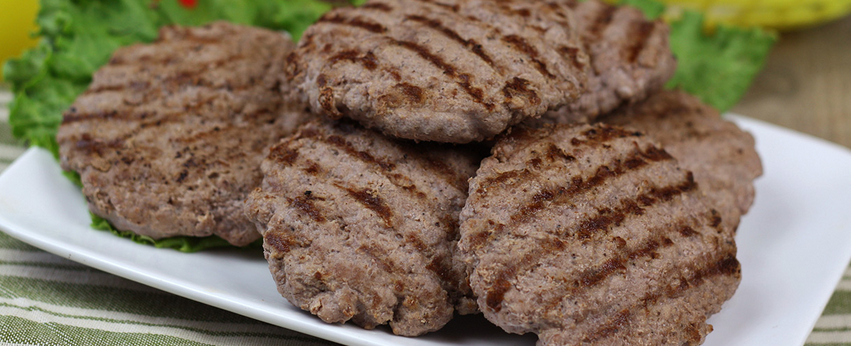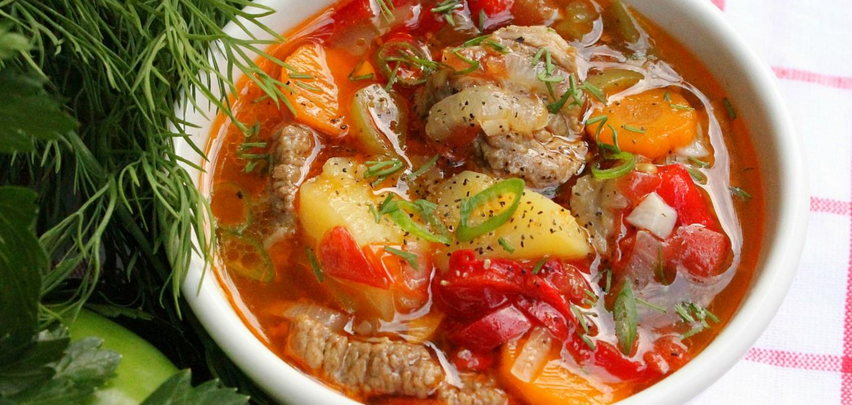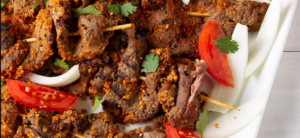The Chef’s Way: Slow Cooking Corned Beef Brisket in a Crock Pot for Deep Flavor and Maximum Comfort

As a working chef in New York, I’ve cooked my fair share of glamorous cuts and five-star centerpieces. But if there’s one humble dish I find myself coming back to, especially when cooking at home, it’s corned beef brisket—slow-cooked in a crock pot, just the way comfort food should be. There’s something deeply rewarding about this kind of cooking. You prep it in the morning, and by evening, your kitchen smells like a cozy Irish pub crossed with a grandmother’s Sunday roast.
- Selecting the Best Corned Beef Brisket for the Crock Pot
- Core Ingredients for a Flavorful Cook
- Slow Cooking Process: Layering Flavor Over Time
- Alternative Cooking Methods: Oven, Pressure, and Even Microwave
- Cooking Time and Temperature Comparison Table
- Balancing the Salty Brine with Sweet, Tangy, or Spiced Notes
- Serving Corned Beef as a Starter or a Centerpiece
- Flavor Variations from Around the World
- Side Dishes That Make It a Meal
- Leftovers You’ll Actually Look Forward To
- Getting the Perfect Slice: Temperature and Grain Direction
- Hosting with Corned Beef: Family Dinners and Special Occasions
- The Secret to a Good Brisket Broth
- Common Mistakes and How to Avoid Them
- Why This Dish Still Has a Place in My Weekly Rotation
- FAQ

Selecting the Best Corned Beef Brisket for the Crock Pot
When you walk up to the meat counter and ask for corned beef brisket, you’re usually offered two options: flat cut and point cut. The flat cut is leaner, more uniform, and better for clean slicing. That’s what I use if I’m serving plated portions or sandwiches. The point cut has more fat and connective tissue, making it juicier and more flavorful—great for shredding and rustic meals.
You’ll also want to check whether the brisket comes with a spice packet. Most do, but if it doesn’t, you can easily build your own spice blend. I like mine heavy on mustard seed, coriander, black pepper, and bay leaf.
Cured brisket is already packed with briny, salty character, so picking the right cut is about texture and fat content. The crock pot takes care of the rest.
Core Ingredients for a Flavorful Cook
This is a slow-cooked dish, so every ingredient counts. The brisket doesn’t need a thousand seasonings—it needs the right ones. Here’s what I include every time:
- 3–4 pound corned beef brisket (flat or point cut)
- 4–5 medium waxy potatoes, halved
- 3 large carrots, cut thick on the bias
- 1 large onion, quartered
- 3 garlic cloves, gently smashed
- 1 head of green cabbage, cut into wedges (added later)
- 1 bottle of dark beer (optional, but highly recommended)
- 2 cups low-sodium beef broth or water
- Bay leaves, whole peppercorns, mustard seeds
- Optional: a dash of apple cider vinegar or brown sugar to balance the salt
Lay your veggies in the base of the crock pot, brisket on top (fat side up), then pour in your liquid and sprinkle in your spices. If the brisket came with a packet, I still add a few extra peppercorns and a bay leaf or two—it elevates the flavor.
Slow Cooking Process: Layering Flavor Over Time
I always treat the crock pot like a tool for gentle braising. The secret isn’t speed—it’s patience. Once the brisket is in, the goal is slow, even cooking that allows collagen to break down and flavor to deepen.
Start by placing the potatoes, carrots, and onions on the bottom. That forms a natural trivet and keeps the meat slightly elevated. The fat cap should face up, so it bastes the meat as it melts.
I pour the beer in first—it deglazes the bottom and gives a malty base. Then broth. The liquid should come up about ¾ of the way. Add your aromatics, close the lid, and cook on low for 8–10 hours.
Cabbage goes in during the final 90 minutes. Any earlier and it turns to mush. Let it gently steam on top of everything else—it absorbs the flavor without getting overcooked.
Alternative Cooking Methods: Oven, Pressure, and Even Microwave
While I’m a crock pot loyalist when it comes to corned beef, it’s not the only way to get a tender, flavorful result. Sometimes your schedule—or your tools—call for other options, and each brings its own character to the dish.
In the oven, I go with a Dutch oven at 300°F. Place the brisket on a bed of vegetables with broth and spices, cover tightly with a lid or foil, and bake for about 3.5 hours. The flavor is rich and the oven gives you the chance to glaze and crisp the top during the last 10–15 minutes under the broiler.
In a pressure cooker, you can get incredibly tender brisket in about 90 minutes on high pressure with a natural release. Add the cabbage at the end using the sauté function to keep it from turning into mush.
And yes—you can reheat in the microwave. Use a microwave-safe dish with a few spoonfuls of the cooking liquid, cover with a damp paper towel or lid, and heat in short bursts. Not glamorous, but very effective for next-day meals.

Cooking Time and Temperature Comparison Table
Here’s the internal cheat sheet I use when deciding how to prep corned beef brisket depending on time, tools, and setting. Stick it to your fridge or keep it in your notes—it’ll save you more than once.
| Method | Temperature | Cook Time | Notes |
| Crock Pot (Low) | ~200°F / 93°C | 8–10 hours | Deepest flavor, most tender texture—ideal for meal planning |
| Crock Pot (High) | ~300°F / 149°C | 4–5 hours | Faster, but slightly firmer texture |
| Oven (Covered) | 300°F / 149°C | 3.5–4 hours | Great for layering flavor and caramelizing under broiler |
| Pressure Cooker | High Pressure | 90 minutes | Fast and reliable—perfect texture with natural release |
| Sous Vide + Finish | 180°F / 82°C | 10–12 hours | Luxe results—restaurant-level but more effort |
| Microwave (Reheating) | Medium power | 3–4 minutes | Only for leftovers—keep moist with sauce or broth and a cover |
Balancing the Salty Brine with Sweet, Tangy, or Spiced Notes
Corned beef comes with a strong, unmistakable briny backbone. That’s great—but it needs a counterbalance. Otherwise, your dish ends up one-note, like playing a piano with one key.
In my kitchen, I always introduce something sweet, acidic, or spiced. A bit of brown sugar or a drizzle of honey adds contrast. Apple cider vinegar or balsamic gives the acid hit that brightens everything. I’ve even dropped in a cinnamon stick or a few cloves for complexity when I want it to feel more festive.
My favorite addition? A splash of Guinness or a glug of apple juice, depending on the crowd. Either one tames the salt and opens up the dish.
Serving Corned Beef as a Starter or a Centerpiece
While most people think of corned beef as a rustic main, I’ve served it plenty of times in smaller, more elegant forms. For starters, try shaving it thin and layering it over rye toast with pickled mustard seeds and whipped horseradish cream. That’s how we did it at a chef’s table tasting once—and the guests were floored.
As a centerpiece, it shines when sliced thick and plated with buttery cabbage, potatoes, and a reduced jus. You can elevate it even more with roasted root vegetable purée, grilled leeks, or a tangy slaw. Leftover brisket also makes a phenomenal first course when wrapped in puff pastry with Swiss and sauerkraut for an Irish-style Wellington.

Flavor Variations from Around the World
Corned beef might have Irish roots, but its flavor potential stretches across borders. I’ve played with countless regional twists over the years, and it never disappoints.
For a Caribbean spin, I add allspice, a dash of Scotch bonnet sauce, and finish it with fresh thyme and scallions. For a German-inspired version, I add juniper berries, beer, and apple slices for sweetness and aroma. And if I want something Asian-inflected, I’ll go with ginger, star anise, soy sauce, and a drizzle of sesame oil to finish.
Don’t be afraid to go off-script. The base flavor of corned beef is a perfect blank slate for regional ingredients to shine, especially when paired with the right broth or braising liquid.
Side Dishes That Make It a Meal
Corned beef on its own is good. But paired with the right side? It becomes comfort food nirvana. When I serve it at home, I go with cabbage, of course—but always butter-basted or roasted for added texture. Mashed or roasted potatoes are a given. I’ll often toss in glazed carrots or parsnips for color and sweetness.
For something lighter, I like a mustard-dressed arugula salad or even a vinegar-dressed cucumber slaw to cut the richness. And when I really want to lean into hearty fare, I serve it alongside skillet cornbread or even a scoop of hot grits with garlic butter.
The beauty of corned beef is that it plays well with both cozy and crisp—balance is everything.
Leftovers You’ll Actually Look Forward To
If you’ve got leftover brisket, congratulations—you’ve got tomorrow’s best meal already handled. I love slicing the chilled brisket thin and layering it into a classic Reuben with Swiss, sauerkraut, and Russian dressing on rye. If I’m going rustic, I dice the beef and pan-fry it into a crispy hash with potatoes and onions, topped with a runny egg.
You can also toss chopped brisket into pasta with mustard cream, roll it into cabbage leaves for a savory roulade, or stir it into a chowder or stew. I even made a shepherd’s pie once with leftover corned beef and Guinness gravy—it didn’t last long.
Wrap it well, and you’ll be eating better than takeout for the next three days.

Getting the Perfect Slice: Temperature and Grain Direction
Slicing corned beef brisket is like slicing steak—it’s all about direction and temperature. I always let the brisket rest for at least 15–20 minutes out of the slow cooker before cutting. That gives the juices time to settle so they don’t all spill onto the cutting board.
Then comes the crucial part: slice against the grain. You’ll see long muscle fibers running along the brisket—cut perpendicular to those. This makes each bite tender and chewable, not rubbery or stringy.
Use a long, sharp slicing knife and aim for quarter-inch slices for plated meals. For sandwiches, I go thinner—almost shaved.
Hosting with Corned Beef: Family Dinners and Special Occasions
You don’t need a holiday to bring out the corned beef—but when you do, it always feels festive. I’ve served it at St. Patrick’s Day, of course, but also at winter dinner parties, baby showers, and cozy Sunday suppers.
For family-style meals, I slice the brisket thick and serve it on a big wooden board with warm cabbage, roasted baby carrots, and horseradish cream. If the occasion calls for something elevated, I brush it with a molasses-Dijon glaze and finish it under the broiler for shine and texture. Slice it thin and fan it out on a platter next to a pile of mustard-laced potato salad and pickled beets, and you’ve got yourself a centerpiece.
It’s a dish that holds its own—and then some—on any table, rustic or refined.
The Secret to a Good Brisket Broth
The broth leftover in the crock pot isn’t just waste—it’s liquid gold. I strain it through a mesh sieve and reduce it in a saucepan until it coats the back of a spoon. Sometimes I’ll finish it with a knob of butter or a splash of cream for richness.
Other times, I turn that broth into soup the next day. Toss in some barley, a few shredded cabbage leaves, maybe some diced carrots or white beans—and suddenly, yesterday’s dinner becomes today’s comfort bowl.
Don’t pour it down the drain. You already built flavor for eight hours—use it again.
Common Mistakes and How to Avoid Them
Even a dish as forgiving as slow-cooked corned beef has a few traps. One is undercooking. People think 6 hours on low is enough—it’s not. The collagen needs more time to melt, or the brisket will feel tough and dry.
Another is overcooking the vegetables. You have to stagger them—especially the cabbage. Add it too early and it dissolves into the liquid. I always wait until the final 90 minutes or so.
Lastly, don’t forget to taste before serving. Some briskets are saltier than others depending on the brine. A splash of acid or a pinch of sugar at the end can bring it into perfect balance.
Why This Dish Still Has a Place in My Weekly Rotation
Corned beef brisket isn’t trendy. You won’t find it in the latest small plates menu or on a tasting flight next to fermented squid. But for me? It’s essential. It’s reliable. It tastes like home.
Whether I’m cooking for family, friends, or just myself after a long service, this dish delivers. It requires patience, but not much effort. It rewards simplicity. It fills the kitchen with warmth and the table with joy.
There’s a reason I keep a brisket in the freezer at all times. Because no matter what the week throws at me, I know I’ve got one meal that always hits the spot—slow, satisfying, and made with care.
FAQ
Can I put corned beef brisket in the crock pot without searing it first?
Absolutely. While searing adds an extra layer of flavor and color, it’s not essential for a great outcome. I sear when I have time, but if it’s a busy morning, I skip it—and the slow cooker still works its magic beautifully.
Do I need to rinse the brisket before cooking?
Yes, I always give it a quick rinse under cold water to wash off excess curing salt. It doesn’t remove the flavor, just helps tone down the salt level so your final dish is better balanced.
Which cut is better for crock pot cooking: flat or point?
Both work, but it depends on your goal. Flat cut slices more neatly and is leaner. Point cut has more fat and marbling, so it’s juicier and better for shredding. I personally use point cut when cooking for comfort food vibes.
Should the fat cap face up or down?
Always face the fat side up. That way, it slowly bastes the meat as it cooks, keeping everything moist and rich. It also prevents the meat from drying out, especially during those long hours on low.
When should I add the cabbage?
Never at the beginning. Add the cabbage wedges during the last 90 minutes to 2 hours of cooking. That gives them time to soften and absorb flavor without disintegrating into the broth.
Can I use water instead of beer or broth?
Yes, but I’d recommend at least adding a splash of something acidic like apple cider vinegar or lemon juice to liven it up. Water works fine, but beer or broth gives it more body and depth.
How do I keep the vegetables from turning to mush?
Layering and timing. Put the potatoes and carrots on the bottom under the brisket—they can handle the long cook. Keep cabbage out until near the end. If you’re very particular, you can par-cook vegetables separately and add them when serving.
How do I know the brisket is done?
It should be fork-tender, but not falling apart completely. I test by sliding a knife or fork into the center—if it glides in easily, it’s ready. Internal temp should read about 190°F (88°C), but texture is the real test here.
What’s the best way to slice corned beef?
Let it rest for 15–20 minutes out of the slow cooker, then slice against the grain. This shortens the muscle fibers and keeps each bite tender instead of chewy or stringy.
Can I freeze cooked corned beef brisket?
Definitely. Slice it or leave it whole, and freeze it with some cooking liquid to prevent drying. It’ll last 1–2 months and reheats well in the oven, stovetop, or slow cooker on low with broth.
How do I reheat leftovers without drying them out?
Use low, moist heat. I place slices in a covered dish with broth and warm them in the oven at 275°F, or gently on the stovetop. Even the microwave works, just cover with a damp paper towel and don’t overdo it.
Is corned beef only for St. Patrick’s Day?
Not at all. It’s a great make-ahead dish for busy weeks or casual weekend meals. I make it year-round, especially in cooler months when I want hearty, satisfying food that doesn’t require hovering over the stove.
Can I cook it on high instead of low?
Yes, you can cook it on high for 4 to 5 hours, but I prefer low and slow for better texture and flavor development. When you rush it, the collagen doesn’t have time to break down the same way.
Why does my brisket taste too salty?
Some store-bought briskets are cured more aggressively. Rinsing helps, but you can also balance salt with acid—like a dash of vinegar or citrus in the broth—and sweetness, like brown sugar or carrots.
How do I reduce the broth into a sauce?
After cooking, strain the broth and simmer it in a saucepan to reduce by half. You can stir in a little cornstarch slurry if you want it thicker, or just mount it with cold butter at the end for gloss and richness.




Post Comment